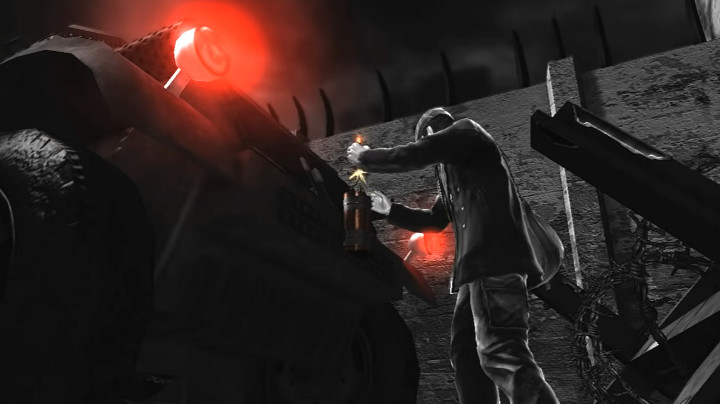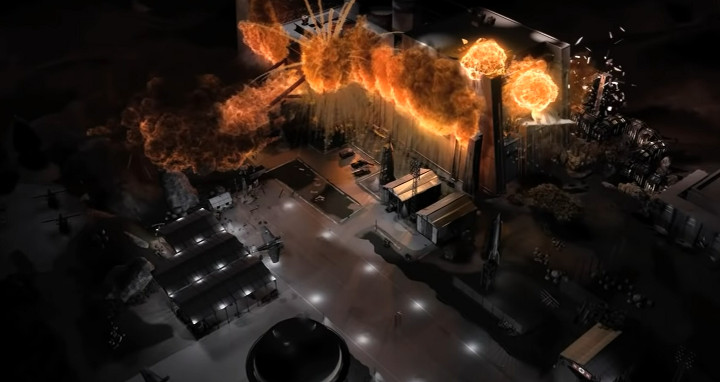
Don’t get me wrong, I loved The Saboteur when it came out back in November of 2009. But having recently gone back to it, this game has aged like a fine wine.
Developed by Pandemic Studios, the company behind the very excellent Mercenaries: Playground of Destruction (and the less-excellent Mercenaries 2: World in Flames), The Saboteur was a breath of fresh air and, I might argue, an act of defiance. Not only did it buck the current trend of dialing down the Nazi-ness of Nazis, but it also featured cheeky DLC that would enable its burlesque dancers to be completely topless (although it was probably more stripper than burlesque dancer at that point, but I digress).
Anyway, when I returned to The Saboteur, I was half expecting atrocious vehicle control (for some reason, I recall the cars handling like lead ingots on an ice rink filled with broken glass — or the cars in Mafia). But to my surprise, the vehicle controls are smooth as butter, even when compared to current titles. It just feels good, and there is never a moment when I feel like I’m floating or drifting out of control.
Case in point, early in the game, The Saboteur saddles you with a mandatory racing mission. If you are at all familiar with my tastes, you know I hate mandatory racing missions. But while playing through the Pole Position mission in The Saboteur, I was actually disappointed that it’s scripted to end with the German racer shooting out my tire and curbing my ability to keep racing. I was looking forward to drifting through that track like a regular ol’ Sean Boswell.
But the responsive controls aren’t limited to driving. Controlling the main protagonist, Sean Devlin (an Irish mechanic-turned-racer-turned-thorn-in-the-side for the Nazis), just feels right. He doesn’t need to shift his weight while pivoting to turn abruptly, requiring a dozen extra animations to do so. No sir, The Saboteur features classic arcade controls through and through — and for the better. I forgot how fun it is to just move a game character where you want them to go, not caring about the verisimilitude of their movements. Because these characters aren’t real (surprise surprise, and/or spoiler alert).

Unfortunately, the building-scaling mechanic leaves much to be desired. In this regard, the original Assassin’s Creed — which came out two years earlier and almost certainly inspired the inclusion of the feature in The Saboteur — runs laps around The Saboteur. Climbing the faces of buildings is just more fluid in Assassin’s Creed. The Saboteur requires a button press for Sean to climb from windowsill to window frame to brick ledge to roof awning. Each and every step must be instructed instead of simply holding the analog stick in the direction you wish to climb.
And even though the visuals are definitely dated — the Eiffel Tower is visible from almost any point in the game world as a muddied, glowing mess, and the brick textures are barely better than PSOne-era Tomb Raider games — the hyper-stylized visual effects keep it grounded. It almost looks more like a Sly Cooper game than, say, Grand Theft Auto III, and the more cartoonish art style definitely holds up better today than any early GTA game does.
And I haven’t even mentioned The Saboteur’s main hook yet. The game world starts out in mostly black-and-white, with the red of the Nazi flags and armbands standing out in sharp contrast. Some of the in-game light sources also pop with a muted yellow glow. As you liberate occupied Paris and the surrounding countryside, however, the color returns. Eventually, there are no more pockets of black and white, a visual metaphor for the fact that there are no more Nazis.

You can feel the oppression, not only in the muted monochrome color palette, but also with the downtrodden demeanor of the NPCs that populate the world. It is especially cool when you transition from a pocket of color to a black-and-white neighborhood. It is subtle yet sudden. And the more you free Paris from the insidious grasp of the Third Reich, the more the NPCs perk up and greet you cheerily. The ambience — although rudimentary, given the confines of hardware at the time — is truly great stuff.
I am blown away by just how great The Saboteur is, even after 11 years of technological advancement. If you have the ability to check out The Saboteur, I would strongly advise it. It’s a really fun gem that stands the test of time.